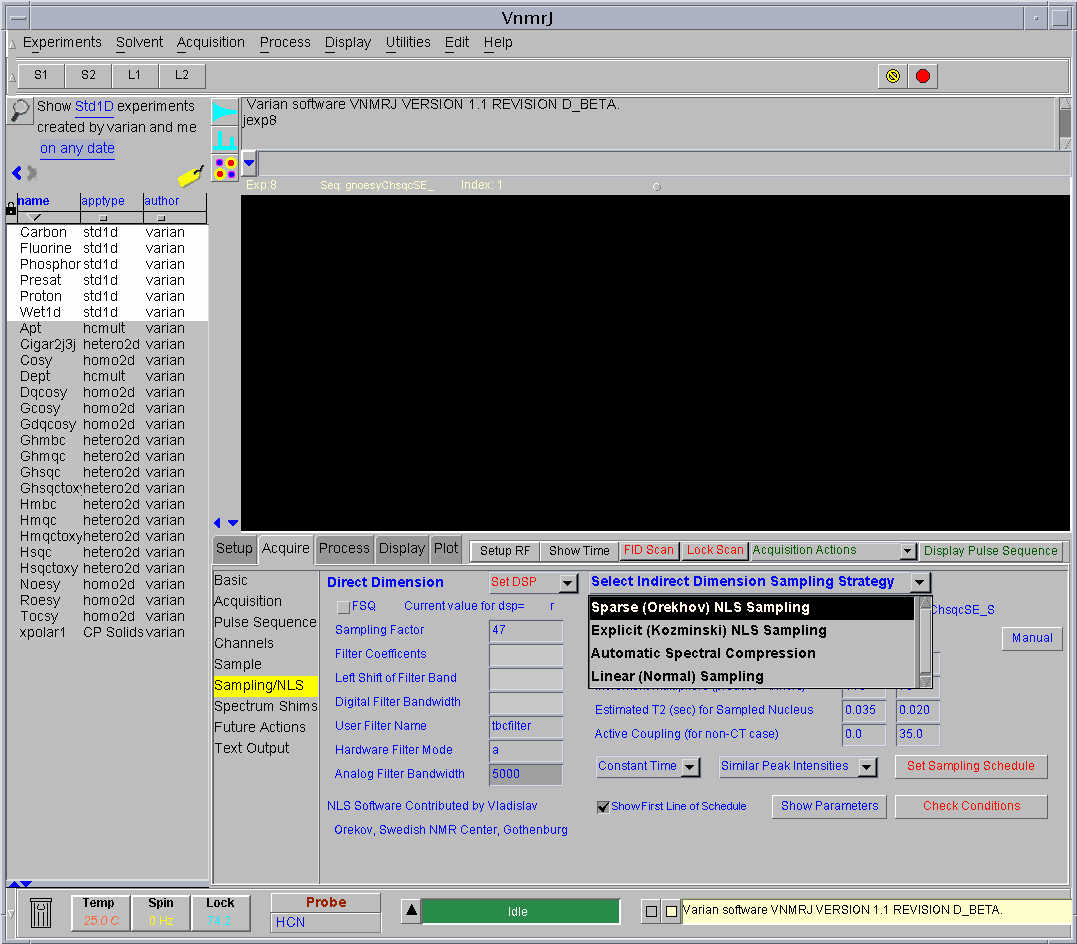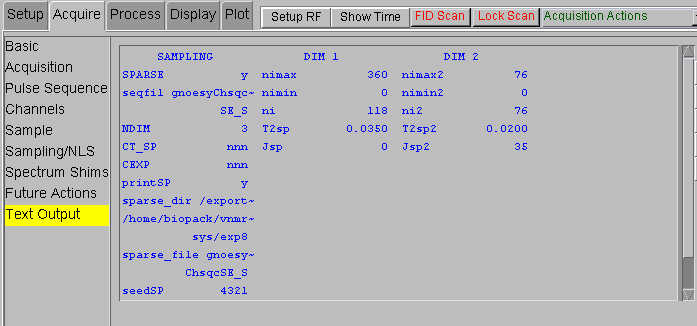Setting up non-uniformly sampled spectra/NUS guide for Varian
Jump to navigation
Jump to search
Setting up acquisition of non-uniformly sampled data on Varian spectrometers with BioPack
This section will give step-by step instructions on how to set up an NUS spectrum with BioPack for subsequent processing with Multidimensional Decomposition (MDD). In addition to this page, please consult the help files of BioPack itself. The recent BioPack versions (as early as May 2008), barring any bugs, have a few built-in options for Non-uniform sampling. See the section on Non-linear sampling according to V. Orekhov. If you have an older version of BioPack, please update to a more recent one.
- In VnmrJ, call a macro to load the desired experiment, such as a NOESY-HSQC. Set up the experiment in a regular fashion, except for the ni and ni2 parameters.
- Go to the "Aquire" panel. Choose the "Sampling" tab (it used to be called "Digital Filter").
- In there, choose "Sparse (Orekhov) NLS Sampling" in the drop-down menu for the Indirect dimensions columns. See Figure 1 for details. This will automatically modify the pulse sequence by including the NUS portion. The new sequence will have "_S" at the end. The macro will also set up an additional dialogue for recording of NUS spectrum. The name of the "Sampling" tab will also change.
- Alternatively (or if you have VNMR6.1C), you have to call the actual macro BP_NLSinit(3) from the command line. Here, 3 stands for 3D.
- You may need to recompile the new pulse sequence by issuing seqgen(seqfil) command from the command line.
- You now have to modify the relevant parameters. Pressing "Show Parameters" button or type dgnls and go to "Text Output" window to see them (see Figure 2).
- The most crucial ones nimax and nimax2 define the desired resolution, while ni and ni2 give the number of FIDs actually recorded. In fact, ni and ni2 by themselves have no meaning here, rather only their product is relevant. The level of "sparsing" is thus given by the ratio <math>\frac{ni\cdot ni2}{nimax\cdot nimax2}</math>.
- Two more imporatnt parameters may have to be adjusted: T2sp and T2sp2, which govern the exponential bias of the corresponding dimension. Their values have to be only approximate. In the Arrowsmith lab we use 35ms for 1H, 20ms for 13C and 50ms for 15N, respectively. Other parameters are only important for R-MDD (recursive MDD), which is not yet implemented in the processing GUI, described elsewhere on this site. Please refer to the description in the BioPack help for further details.
- After the parameters are set, press the "Set Sampling Schedule" button or run the corresponding macro from the command line BP_NLSset. At this point two files should be created: "*.in" and "*.hdr_3". They contain the parameters and the actual schedule and MUST be saved together with the fid and propar files.
- NB! if you change any of the nimax, nimax2, ni, ni2, T2sp, T2sp2 parameters, you have to run the schedule generator once again, otherwise you will not be able to process the data properly.
- Run the spectrum by typing go.
- In order to save all relevant files afterwards, use BPsvf macro, instead of svf.

